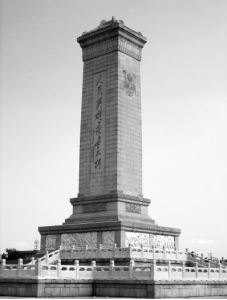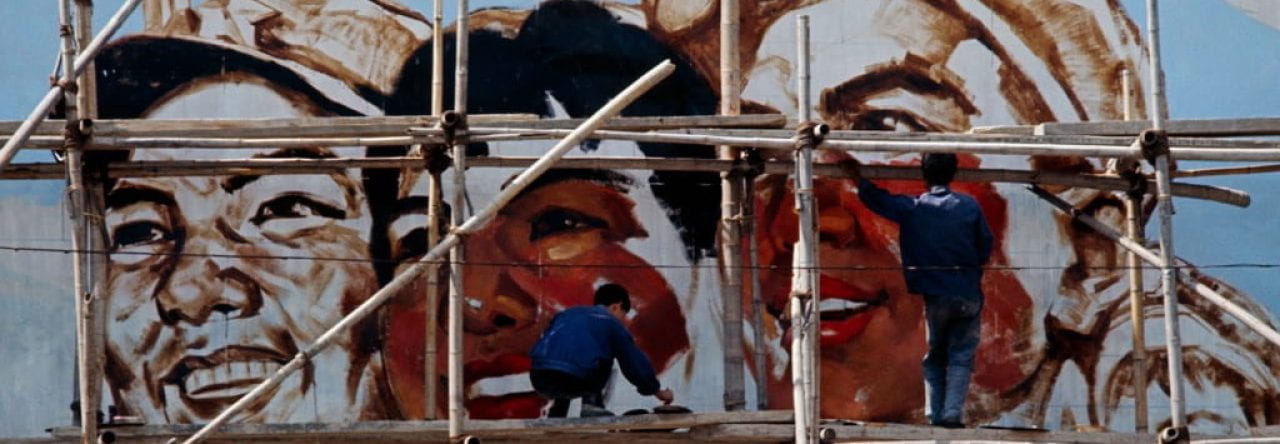
Figure 1. The Monument to the People’s Heroes. Photograph by Chang-Tai Huang. Source: Mao’s New World, Figure 62
The Monument to the People’s Heroes and Hua Tianyou’s bas-relief
The May 4th Movement of 1919 is a bas-relief by Hua Tianyou, carved into the The Monument to the People’s Heroes, located in the Tiananmen Square. The monument is made mostly out of granite and marble, and is 124.5ft tall, which overshadows the Forbidden City when seen from the front. This monument consists of three parts, the words “Eternal Glory to the People’s Heroes” written in Mao Zedong’s characters in the front, an epitaph in the back drafted by Mao and written in Zhou Enlai’s beautiful calligraphy engraved in gold to commemorate the fallen martyrs of the revolution, and beneath it, eight huge bas-reliefs portraying eight major revolutionary episodes in chronological order. Premier Zhou Enlai took a personal interest in this project, and with his group of architects, sculptors, and historians, made this piece into a perfection. From a political standpoint, this monument is much more than a communist monument, but rather an indication of a turning point, remembering the past and moving on to a bright future that Mao has built .Later on, served as the center for large-scale mournings, such as the deaths of Zhou Enlai and Hu Yaobang, which eventually sparked the anti-communist Tiananmen Square protests, thus becoming the center of the anti-communist movements.
The bas-relief that Hua Tianyou worked on depicts the events of the May 4th movement, which was an anti-imperialist movement that students of the University of Beijing started.This eventually resulted in the abdication of the emperor, and thus the fall of the Qing dynasty. Hua’s bas-relief carving consists of 25 students in midst of the protest, with one of them wearing a gown and standing on a low stool, possibly preaching the wrongdoings of what the Qing government did in the Treaty of Versaille. Encircling him are several students calling for support and distributing leaflets and curious students avidly listening to the preacher. Female figures in this bas-relief plays a huge role in which it emphasizes the fact that women also took part in this movement, depicting that they are as enthusiastic with their male counterparts and also breaking away from their traditional roles. The entrance to the Forbidden City in the background, to make the bas-relief more lively, shows the viewers that the event took place where the viewer is standing, allowing them to feel history at first hand.
Bibliography
Hung, C.-tai. (2017). Chapter 10: The Monument to the People’s Heroes. In Mao’s New World Political Culture in the early people’s republic. essay, Cornell University Press.
Monument to the peoples heroes. Architectuul. (n.d.). Retrieved April 21, 2023, from https://architectuul.com/architecture/monument-to-the-peoples-heroes


Leave a Reply
You must be logged in to post a comment.